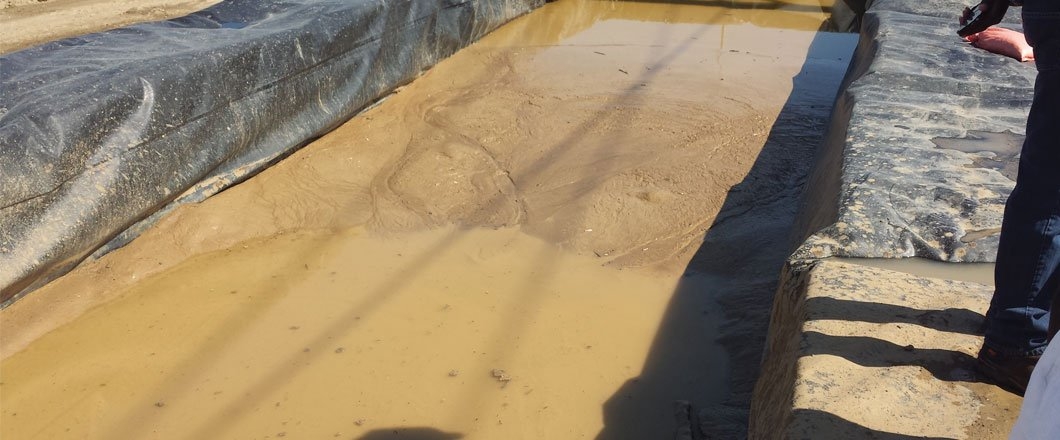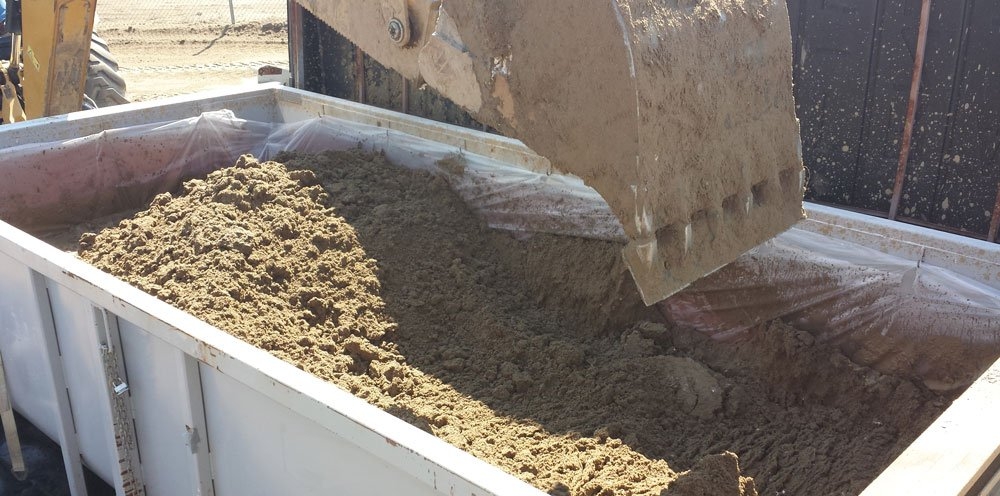
Urban expansion is a reality in many jurisdictions. This reality is forcing many municipalities to recognize the growing need for new infrastructure and existing infrastructure upgrades. One of the largest components of a municipality’s infrastructure deficit is not roads and bridges, it is an underground network responsible for managing fresh water and removing wastewater.
Addressing this need is critical and in the process of building these new systems and updating existing underground infrastructure, significant quantities of liquid waste are generated. The technologies used to implement these upgrades include tunnel boring, microtunneling, directional drilling, and hydro-excavation. These activities underneath or in proximity to large urban areas increase the likelihood of groundwater and soil contamination. This creates more complex challenges for the management of liquid waste generated in the process. New polymer technology can help address these challenges and ensure compliant waste management and broader disposal options for the general contractor.
Risk to freshwater systems and wastewater security are significant areas of concern with underground infrastructure projects. Outdated water infrastructure can lose 40 percent of freshwater from pipe failures and leaks. Much of our wastewater infrastructure was never designed for the current volumes being produced in urban areas. This water management deficit is projected to get worse as more people migrate to cities for employment. The risk of failure is becoming more probable and municipalities are managing liability through a risk management process. Cities will continue to expand and urban density will continue to intensify. Addressing this growing issue to manage water security will require the application of new technologies and creative problem solving with a new level of urgency.
Compounding the problem is how many municipalities are dealing with growth and risk management. Growth is inevitable and desirable for many municipalities but far too often, low technology solutions for liquid waste management that have been in place for decades become the default and are often considered the cost of doing business. New and improved processes, such as the application of polymer technology, are often overlooked in favour of the status quo. These new methods allow for more efficient liquid waste management, often at a lower cost and placing less strain on existing landfill resources and doing so with lower overall risk and less environmental impact.
Environmental groups and regulators are adapting to these new realities. Soil security and preservation are at the forefront of environmental concerns related to addressing underground infrastructure requirements. The risk of groundwater contamination from inappropriate disposal of liquid material potentially impacting food security is now being considered in project planning. Progress is being made. New regulations are coming online to ensure tracking and disposal compliance when managing contaminated soils. This is where polymer technology can play a greater role in helping municipalities meet new targets:
· Eliminate the need for dry bulk additives to meet solids criteria for transport
· Generate less total contaminated soil
· Extend landfill life
· Create opportunities for landfill diversion
· Reduce transportation
· Reduce the risk of groundwater contamination
What Is Polymer Technology and How Is it Changing the Game?
New technologies are available that can drastically reduce costs while improving efficiency and complying with regulations for waste management. Polymer technology is still a relatively new process for managing liquid waste and research continues to explore its full potential. Even in these early stages of development, it is clear that polymer technology can drastically reduce costs, improve efficiency and help contractors comply with new regulations and risk management for liquid waste.

A brief comparison illustrates the advantages of polymer technology. Historically, the removal of wastewater slurry would typically involve collecting liquid waste in inground sumps or tanks. Vacuum trucks or tankers then transport this wet material to disposal sites outside of cities. These traditional methods come with increased costs and greater risk as a result of the number of trucks and the volume of liquid waste. The more trips required the greater the greenhouse gas emissions. Polymer technology offers an alternative that involves fewer moving parts and is more environmentally friendly.
Why is polymer technology better? First, polymer technology can be utilized to solidify waste on site to reduce total volume and improve treatment time. Secondly, waste can be shipped directly to a final disposal site with standard dump trucks, reducing the number of trucks required and the greenhouse gases emitted. As a solid, this soil may now be used for beneficial purposes. Overall, the use of polymer technology results in:
· A faster, simpler, and more efficient process
· A smaller surface footprint to collect and treat wet material
· Less impact on soil microbial life relative to high pH lime or wood terpene alternatives
· Reduced carbon emissions
Even with these benefits from polymer technology, there are particular situations where it is not the most appropriate choice. There are differences among polymer technologies, and it is crucial to understand where and how different polymers can best be deployed.
Not all polymers have the same performance capability. Factors to consider include:
· The particle size distribution of the polymer
· Total absorbency
· Undesirable material in the polymer mixture
· Operator expertise in mixing
· Boring additives
· Liquid waste composition
When looking at particle size, it is essential to understand the distribution for hydration speed and how that is affected across the range of wet materials. Choosing the right size polymers for the job is crucial for the best outcome. Total absorbency in the varying soil conditions is also an important consideration. Moisture variability of the waste material during a project can impact how effective polymers can be.
Super absorbent polymers (SAP) are used when managing particularly wet soils. Using SAP results in the liquids on-site becoming earth-like solids, lowering the risk associated with transportation and lowering project liability. SAP also has limitations, specifically in high salt environments and low acidic environments. In projects where the salt is greater than 10,000 ppm, the absorption capacity of the polymer will significantly diminish. The same rule applies to acidic environments below 3.5 on the pH. To maximize efficiency and successful outcomes, polymer technology relies on the right pH conditions and mixing ratios. Finally, undesirable material in the polymer mixture, such as residual plastic, can change the soil composition, making the reuse of the soil less viable.
There is reason to be optimistic about new approaches to waste management. Municipalities, contractors and waste management service providers have the opportunity to reduce operating costs and meet compliance requirements of new regulations with the adoption of polymer solidification technology. The next time you’re faced with a liquid waste disposal challenge, consider polymer solidification technology and reach out to the experts to align the right technology for your project.